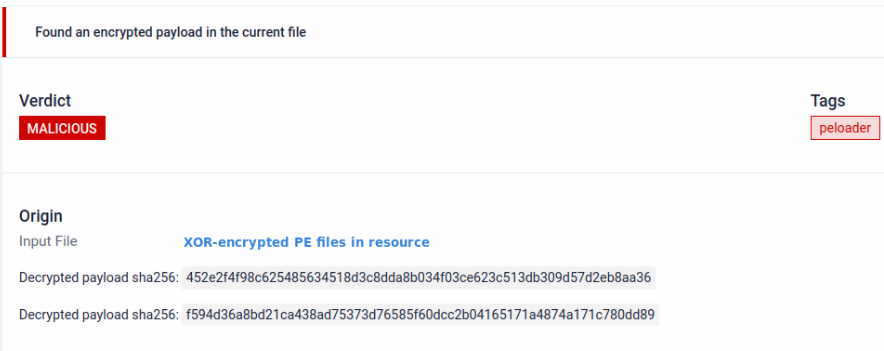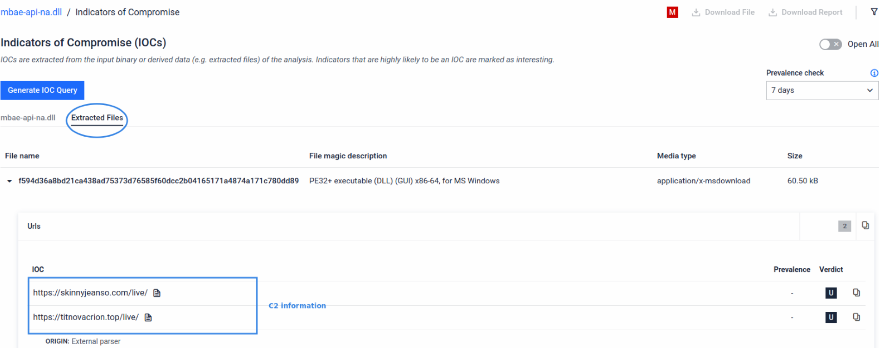This feature enables the sandbox to reveal hidden artifacts embedded within PE files. Malicious artifacts are often encoded and/or encrypted to evade detection and obscure the true intent of the sample. Uncovering these artifacts is essential, as they typically contain critical data (as C2 information) or payloads. By extracting them, the sandbox can deliver a deeper scan, with higher chance of identifying the most valuable IOCs.
PE Resource XOR Decryption
Storing payloads in PE resources helps malware evade detection by static analysis tools. Many security tools focus on analyzing the executable’s main code section, while resources are often overlooked, making it easier to hide malicious content.
Why XOR encryption? It is widely used for its simplicity and efficiency in evading detection, but one key property of XOR is that when a bit is XORed with 0, the original bit remains unchanged. This characteristic makes XOR encryption particularly "weak" when applied to data with a large number of null bytes, such as those often found in PE files. By analyzing patterns in the encrypted data, especially in areas with many null bytes, the encryption key can be revealed, allowing to decrypt the hidden.
This sample is a malware loader that contains a encrypted payload in a resource.
On the following link you can find the sample from the screenshot below:

Hidden payload in PE resource

Payload extracted after XOR decryption

C2 information identified from the payload

